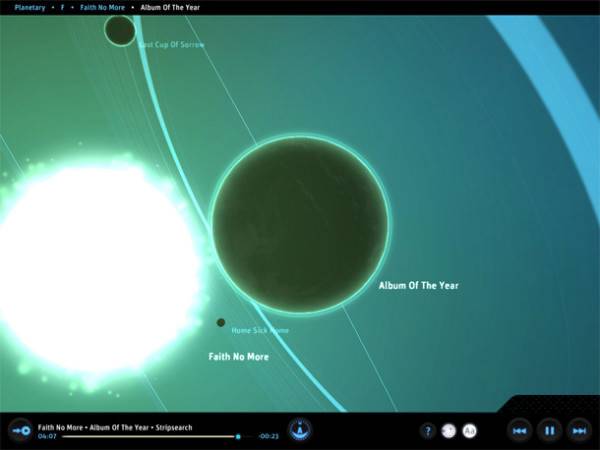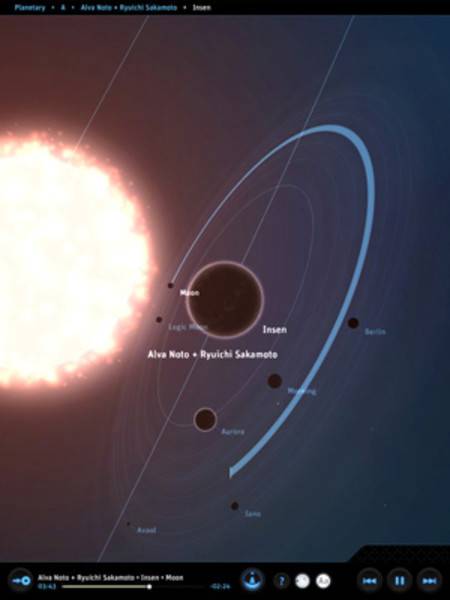A new iPad app launched this month called Planetary. It visualizes your music collection using the solar system as a metaphor and it’s visually stunning. It also seems gimmicky, at first glance. The concept is that stars are music artists, planets are albums and moons orbiting a planet are the album tracks. You can browse and listen to your music as if it was a universe. One reviewer of the app on iTunes coolly dismissed Planetary as “visually appealing but useless.” With probably unintentional irony, the reviewer gave Planetary just 2 stars.

With all due respect, that critic is missing the point. Behind the design coolness, Planetary shows how data visualizations will become the new interface to your computing experiences. Whether on your mobile phone, tablet device, or walking along an urban street, increasingly you will control how you interact with apps using data visualizations of the kind offered by Planetary.
Planetary was launched by San Francisco startup Bloom Studio earlier this month. The company calls it “the first of a new type of visual discovery app” and promises more such apps in the coming months. They plan to use this type of visualization to “let you explore and participate in social networks, video streaming services, and location-based applications in a whole new way!”

What’s different about Planetary is that it doesn’t depend on traditional software controls and design patterns – such as a play button, scrolling down a list of tracks, even flipping through album covers. Instead, the app is controlled by the data visualizations.
In a recent UgoTrade interview, futurist and author Bruce Sterling said of Planetary:
“The thing I consider significant about that remarkable piece of Bloom software is that it uses information visualization as a new breed of control interface. That’s not just fancy re-skinning of the same old music-machine pushbuttons. That whole graphic shebang is generated in real-time on the fly. And you can run code with that, play music, do media with it! An advance like that is important.”
(emphasis ours)
A Wired review of the app notes that it turns a data set – in this case music – into “tactile and dynamic visual objects.”

Imagine those same techniques being used for data from social networking, location, media and real-world objects (the Internet of Things). That’s an intriguing development and I’m curious to see what other apps Bloom releases over the course of this year.
When Planetary launched, CNET conducted an interview with Bloom co-founder Ben Cerveny. He firstly explained the origins of the company’s name: “we’ll make the invisible data visible. We’ll make it Bloom.”
Cerveny told CNET that Bloom’s data visualization apps will become even more powerful once better structured data becomes available:
“…we’re also looking to other sources of metadata to augment the somewhat unreliable ID3 tags attached to tracks in iTunes libraries. So many possibilities from more structured data sources could provide countless ways of seeing the constellations of tunes in new ways.”
He went on to explain how the tablet has ushered in this new era of the user interface:
“The tablet is a total disruption of how we understand popular computing. The next era of experiences will be driven by visceral gesture-based input, and rich fluid responsiveness in native graphics contexts. I see the potential for Bloom to help define a “killer pattern” for application design.”
The big question is whether Bloom can become more than the designer of a slightly gimmicky music app and truly change the way we experience media, social networking and more.
The 2-star reviewer may have been harsh, but they were correct to say that Planetary isn’t actually that useful. It is however a clear indicator of the future of user interfaces – and Bloom is well positioned to be a star.










